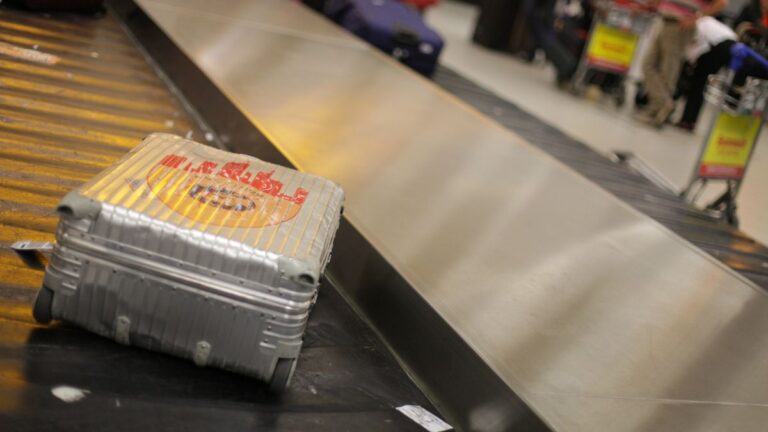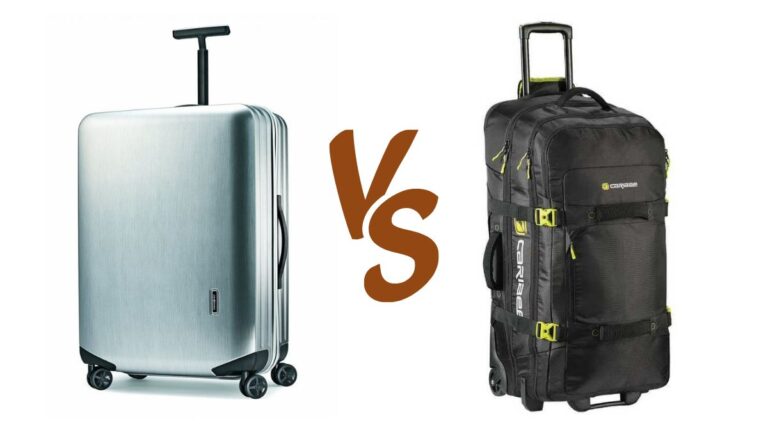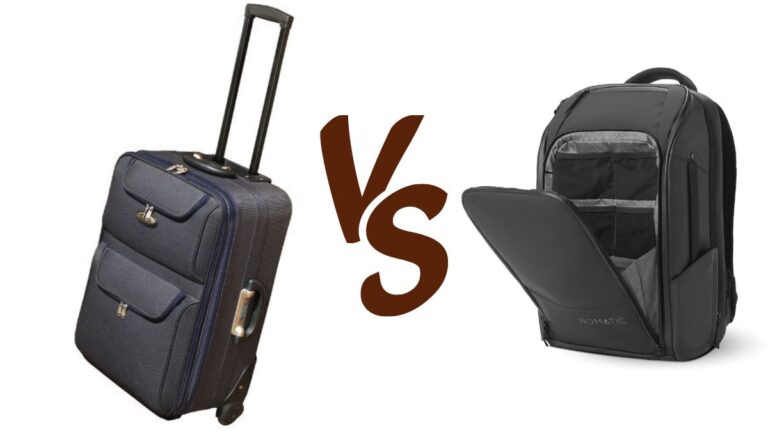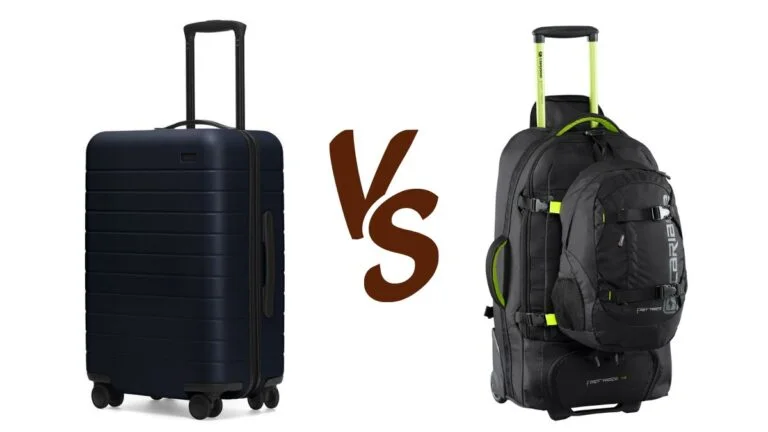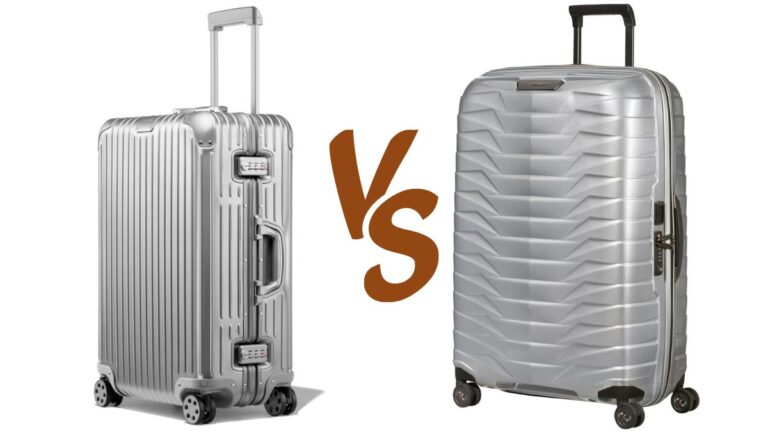Best Luggage Material Unveiled: The Key to Effortless Travel Experiences
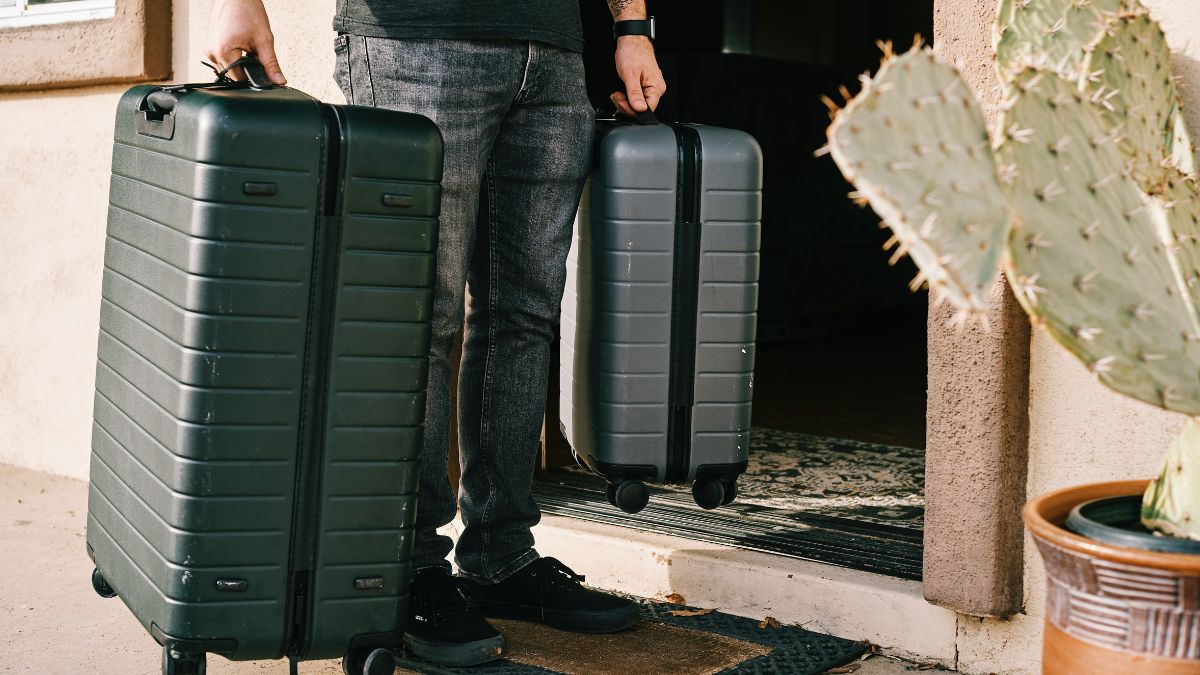
As participants in Amazon Associates and other programs, we earn from qualifying purchases. This comes at no additional cost to you. For more details, see our Affiliate Disclosure.
When it comes to choosing the best luggage material, there are a few things to consider. Luggage can be made from a variety of materials, including ABS, polycarbonate, polyester, and nylon. Each material has its own set of advantages and disadvantages, and the best choice for you will depend on your specific needs and preferences.
In this article, we’ll take a closer look at the different luggage materials available and help you make an informed decision about which one is right for you.
Introduction to Luggage Materials
When it comes to traveling, having the right luggage is crucial. One of the most important factors to consider is the material used in its construction.
Whether you prioritize lightweight convenience, rugged resilience, or a blend of both, understanding the characteristics of different luggage materials will help you make an informed choice.
Hardside Luggage Materials
Hardside luggage is a type of luggage that has hard and rigid sides. It is typically made of metal or plastic and is designed to protect your belongings from the wear and tear of travel. The most common hardside luggage materials are metal (aluminum), polycarbonate, and ABS plastic.
ABS (Acrylonitrile Butadiene Styrene)
ABS (Acrylonitrile Butadiene Styrene) is a versatile luggage material that offers a range of benefits but also comes with certain trade-offs. As a thermoplastic polymer, ABS is known for its durability and impact resistance, making it suitable for handling the rigors of travel.
ABS luggage can withstand bumps, knocks, and rough handling, ensuring that your belongings remain protected. Additionally, ABS is relatively lightweight, providing convenience during transportation. However, it’s important to consider some of the trade-offs associated with ABS as well.
Advantages of ABS Luggage:
- Excellent durability and impact resistance.
- Lightweight design for easy maneuverability.
- Wide range of vibrant colors and stylish designs.
- Relatively affordable compared to some premium materials.
Disadvantages of ABS Luggage:
- Prone to scratching, which can affect the appearance over time.
- May have less flexibility compared to other materials.
- Susceptible to discoloration or yellowing with prolonged exposure to sunlight.
- May not offer as much water resistance as some other materials.
When considering ABS luggage, it’s crucial to weigh these advantages and disadvantages against your specific travel needs and preferences. By doing so, you can make an informed decision and choose the luggage material that best suits your requirements.
| Pros | Cons |
|---|---|
| Lightweight | Less durable than other materials |
| Impact resistant | Prone to damage, especially when checked in at an airport |
| Affordable | More likely to eventually develop cracks in the hard case due to its non-flexible nature |
Polycarbonate (PC)
Polycarbonate (PC) is a highly sought-after luggage material renowned for its exceptional combination of strength and lightweight construction. As a thermoplastic polymer, polycarbonate offers remarkable impact resistance, making it an ideal choice for travelers seeking durable and reliable luggage.
Polycarbonate luggage can withstand heavy impacts, protecting your belongings from rough handling and accidental drops during travel. Despite its robust nature, polycarbonate manages to maintain a lightweight design, enabling easy maneuverability and reducing the overall weight you need to carry.
Now let’s dive into the advantages and disadvantages of polycarbonate luggage.
Advantages of Polycarbonate Luggage:
- Outstanding durability and resistance to cracks and fractures.
- Excellent impact resistance, protecting your belongings in demanding travel conditions.
- Flexibility to absorb impact without permanent deformation or breakage.
- Lightweight construction for effortless lifting, carrying, and maneuvering.
- Sleek and modern design options.
Disadvantages of Polycarbonate Luggage:
- Generally higher cost compared to some other materials.
- May not provide the same level of insulation as other materials.
- Can potentially scratch, although high-quality coatings and finishes can mitigate this.
Polycarbonate offers a winning combination of durability, lightweight design, and impact resistance, making it a popular choice among travelers seeking reliable and stylish luggage options.
| Pros | Cons |
|---|---|
| Durable | More expensive than other materials |
| Lightweight | May not provide the same level of insulation as other materials |
| Flexible | Can potentially scratch |
Softside Luggage Materials
Softside luggage materials are a popular choice among travelers due to their flexibility and lightweight nature. These materials, typically fabrics such as nylon or polyester, offer a range of advantages that make them appealing to many.
Softside luggage allows for easy compression and expansion, making it convenient for fitting into tight spaces or accommodating additional items. The flexibility of the material also allows for better maneuverability, especially when navigating through crowded areas. Moreover, softside luggage is generally lighter than hardshell counterparts, reducing the overall weight you need to carry.
Now let’s explore the advantages and disadvantages of softside luggage materials.
Advantages of Softside Luggage Materials:
- Flexible construction that can accommodate extra items and compress into tight spaces.
- Better maneuverability due to the ability to squeeze into crowded areas.
- Generally lighter weight compared to hardshell luggage.
- External pockets and compartments for convenient access to frequently needed items.
- Absorbs impact better than hardshell luggage, reducing the risk of damage.
Disadvantages of Softside Luggage Materials:
- Less overall protection for delicate items compared to hardshell luggage.
- Susceptible to water damage if not adequately waterproofed.
- May show wear and tear more visibly over time.
- Less resistance to crushing and structural integrity compared to hardshell luggage.
- Limited defense against theft or unauthorized access due to the ease of cutting through fabric.
Softside luggage offers flexibility, lightweight construction, and easy maneuverability, but it may have trade-offs in terms of protection and durability.
| Pros | Cons |
|---|---|
| Flexible | Less overall protection for delicate items compared to hardshell luggage |
| Better maneuverability | Susceptible to water damage |
| Lightweight | May show wear and tear |
| External pockets and compartments | Limited defense against theft or unauthorized access |
| Absorbs impact better than hardshell luggage |
Polyester
Polyester is a popular softside luggage material known for its versatility and durability. It is a synthetic fabric widely used in the travel industry due to its desirable characteristics. Polyester offers excellent resistance to abrasion, tearing, and wrinkling, making it a reliable choice for frequent travelers.
Its durability ensures that your luggage can withstand the rigors of travel, including rough handling and exposure to various weather conditions. Moreover, polyester is often treated to enhance its water resistance, providing an added layer of protection against moisture. With its versatility and durability, polyester is a go-to option for softside luggage.
Now, let’s explore the advantages and disadvantages of polyester as a luggage material.
Advantages of Polyester Luggage:
- High durability and resistance to abrasion, tearing, and wrinkling.
- Lightweight construction, making it easier to carry and maneuver.
- Good water resistance when treated or coated, protecting your belongings from light rain or spills.
- Wide range of color and design options available.
- Typically more affordable compared to other fabric options.
Disadvantages of Polyester Luggage:
- Lower resistance to extreme weather conditions compared to certain materials.
- May not offer the same level of protection as hardshell luggage against impacts or crushing.
- Prone to staining if not properly cleaned and maintained.
- Over time, polyester fabric may show signs of wear and fade in color.
- Limited breathability, which can cause trapped odors or mildew if not adequately aired out.
Polyester offers durability, versatility, and affordability, but it may have limitations in terms of extreme weather resistance and impact protection.
| Pros | Cons |
|---|---|
| Lightweight | Less durable than other materials |
| Affordable | Less protective than hardside luggage |
| Flexible | Absorbs water and are more prone to retaining stains and smells |
Nylon
Nylon is a widely used softside luggage material valued for its strength, durability, and lightweight nature. As a synthetic fabric, nylon offers excellent resistance to abrasion, tearing, and stretching, making it highly resilient against the demands of travel.
It is known for its toughness and ability to withstand rough handling, ensuring that your belongings stay protected throughout your journeys. Nylon also has a relatively lightweight construction, reducing the overall weight of the luggage and allowing for easier maneuverability. Its versatility and availability in various colors and designs make it a popular choice among travelers.
Now, let’s explore the advantages and disadvantages of nylon as a luggage material.
Advantages of Nylon Luggage:
- High strength and durability, offering excellent resistance to abrasion, tearing, and stretching.
- Lightweight construction for easier carrying and maneuvering.
- Good water resistance, often enhanced by water-repellent treatments or coatings.
- Wide range of colors, patterns, and styles available.
- Relatively affordable compared to other high-performance materials.
Disadvantages of Nylon Luggage:
- Lower heat resistance compared to certain materials, making it more susceptible to melting or warping under high temperatures.
- Can absorb odors or retain moisture if not properly dried or cleaned.
- May show signs of wear and fading over time, particularly with extended exposure to sunlight.
- Less rigid compared to hardshell luggage, offering less impact protection for delicate items.
- Depending on the quality, lower-grade nylon may be more prone to fraying or developing snags.
Nylon offers strength, durability, and lightweight properties, but it may have limitations in terms of heat resistance and impact protection.
| Pros | Cons |
|---|---|
| Durable and strong | Not eco-friendly |
| Relatively affordable | Lower heat resistance |
| Versatile | Less rigid |
| Moisture absorbent | May show signs of wear and fading |
Durability and Resistance to Wear and Tear
When it comes to durability and resistance to wear and tear, polycarbonate (PC) stands out as an excellent choice for luggage materials. Polycarbonate is known for its exceptional strength and impact resistance, making it highly durable and able to withstand the demands of travel.
It offers excellent resistance to cracks, fractures, and scratches, ensuring that your luggage remains intact and maintains its appearance even after frequent use. Polycarbonate’s ability to absorb impact without permanent deformation or breakage adds to its longevity and durability.
Nylon is another material that offers good durability and resistance to wear and tear. It is renowned for its strength and high abrasion resistance, making it highly resilient against rough handling, friction, and stretching.
Nylon fabrics are designed to withstand the rigors of travel, ensuring that your luggage can withstand the bumps, scuffs, and abrasions that may occur during transit. Additionally, nylon is known for its excellent tensile strength, which helps prevent tearing and extends the lifespan of the luggage.
In comparison, polyester is also a durable material that exhibits good resistance to wear and tear. It is known for its strength and resistance to abrasion, making it less prone to damage from friction and rough handling. While polyester may not have the same level of strength as polycarbonate or nylon, it still offers reliable durability and can withstand the rigors of travel.
Weight and Portability
When it comes to weight and portability, the right choice of luggage material can significantly impact your travel experience. Lightweight luggage materials make it easier to navigate through crowded airports, maneuver in tight spaces, and minimize strain on your body during extended periods of carrying. Here’s a breakdown of how different materials fare in terms of weight and portability:
ABS (Acrylonitrile Butadiene Styrene)
ABS luggage offers a good balance between durability and weight. While not as lightweight as some other materials, ABS still provides manageable weight for easy handling and transportation.
Polycarbonate (PC)
Polycarbonate is known for its exceptional strength and lightweight construction, making it an excellent choice for travelers who prioritize ease of portability. It offers a significant reduction in weight compared to traditional hardshell materials.
Nylon
Nylon is a lightweight fabric commonly used in softside luggage. It offers excellent strength-to-weight ratio, making it an ideal choice for those seeking lightweight and portable luggage options.
Polyester
Polyester is another lightweight fabric widely used in softside luggage. It offers a good balance between durability and weight, making it suitable for travelers who value portability and affordability.
Choosing a lightweight luggage material allows for greater ease and comfort during travel, especially when you need to navigate airports, public transportation, or uneven terrain. Assessing the weight and portability features of different materials will help you find the perfect balance between durability and ease of travel, ensuring a hassle-free journey.
Cost and Value for Money
When it comes to cost and value for money, the choice of luggage materials can play a significant role in determining the overall value of your purchase. Here’s how different materials compare in terms of cost and value:
ABS (Acrylonitrile Butadiene Styrene)
ABS luggage tends to be more budget-friendly compared to premium materials. It offers a good balance between durability and affordability, making it a cost-effective option for travelers seeking reliable luggage without breaking the bank.
Polycarbonate (PC)
Polycarbonate is often considered a premium luggage material, and as a result, it typically comes at a higher cost compared to other materials. However, the durability, impact resistance, and lightweight properties of polycarbonate luggage can make it a worthwhile investment. The long lifespan and reliable performance of polycarbonate luggage can provide excellent value for money in the long run.
Nylon
Nylon is a widely used luggage material known for its durability and strength-to-weight ratio. It tends to be more affordable compared to polycarbonate, making it a cost-effective option for many travelers. Nylon luggage offers good value for money, providing a balance between durability, lightweight design, and reasonable pricing.
Polyester
Polyester is known for its affordability, making it a budget-friendly option for travelers. While it may not offer the same level of durability as polycarbonate or nylon, it still provides satisfactory value for money. Polyester luggage can be a suitable choice for occasional travelers or those on a tighter budget who still prioritize functionality and style.
When considering the cost and value for money, it’s essential to assess your travel needs and priorities. Premium materials like polycarbonate may come at a higher initial cost but can offer exceptional long-term value. Nylon provides a good balance between durability and affordability. Polyester, while more budget-friendly, can still offer satisfactory value for occasional or less demanding travel requirements.
Choosing the Best Luggage Material for You
Selecting the best luggage material depends on your individual preferences, travel needs, and priorities. While each material has its advantages, here are some concluding points to help you make an informed decision:
- ABS (Acrylonitrile Butadiene Styrene): ABS offers a good balance between durability and affordability, making it suitable for budget-conscious travelers who prioritize a cost-effective option without compromising on reliability.
- Polycarbonate (PC): Polycarbonate is the top choice for travelers seeking a combination of durability, impact resistance, and lightweight design. It is ideal for frequent travelers or those who value long-term durability and are willing to invest in a premium option.
- Nylon: Nylon is an excellent choice for those who prioritize lightweight and portable luggage without sacrificing strength. It offers a good balance between durability, affordability, and maneuverability, making it suitable for a wide range of travelers.
- Polyester: Polyester is a budget-friendly option that still provides satisfactory durability and lightweight construction. It is a suitable choice for occasional travelers or those seeking cost-effective luggage options.
The best luggage material for you will depend on your specific travel requirements, preferences, and budget. Consider factors such as durability, weight, impact resistance, and cost to find the perfect match. It’s also worth considering other features like water resistance, design options, and brand reputation.

